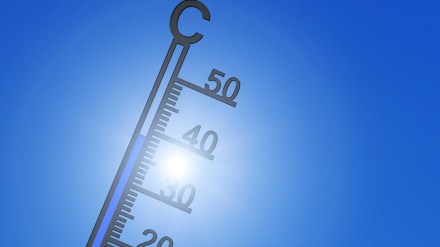As the India Meteorological Department (IMD) has started issuing alerts for heatwaves, the health ministry issued a letter to all the states and union territories urging them start implementing heat-health action plans.
“With the onset of summer, an increase in the exposure to heat, including extreme conditions may occur. Some places of the country have begun witnessing high temperatures.I would like to draw your kind attention to public health and clinical guidelines on ‘Heat and Health’ available on the website of National Centre for Disease Control (NCDC). I request you to disseminate these guidance documents to all Districts for effective preparedness of health departments and health facilities to prevent, manage, and monitor the health impacts of extreme heat. To this effect, an advisory outlining various implementation measures for State/Union Territory (UT) Health Departments in Summer is enclosed,” Health secretary Punya Salila Srivastava wrote in the letter.
From 1st March 2025 onwards, through daily surveillance, patient-level information on clinical diagnosis of heatstroke is being captured on Integrated Health Information Platform (IHIP) for all States/UTS, it stated.
To this effect, training sessions in virtual mode have been conducted recently by National Programme on Climate Change and Human Health, NCDC. Please ensure that these are carried forward with the training material provided by NCDC and that all relevant health professionals are trained to report on IHIP using existing P-form level credentials, he said.
According to the health ministry, the daily heat alerts generated by IMD are shared by NPCCHH, NCDC with States. These alerts include forecasts of heat wave for the next 3-4 days and may be disseminated promptly to all health facilities. State, District, and City Health Departments may ensure the implementation of Heat-Health action plans and support in planning, managing and assessing response to heat along with other responding agencies.
“Health Departments of the States/UTs must continue efforts for sensitization and capacity building of medical officers, health staff, and grass-root level workers on heat illness, its early recognition and management. Training manuals developed by NCDC on these subjects may be used for the training. Further, virtual refresher training sessions on clinical management of heat-related illnesses are being conducted by NPCCHH, NCDC in March 2025. Clinicians, paediatricians, medical officers and relevant public health officials from your State/UT may be encouraged to join these sessions to ensure quality clinical management and surveillance reporting,” the ministry stated.
The health secretary also said that health facility preparedness must be reviewed for the availability of adequate quantities of essential medicines, intravenous fluids, ice packs, ORS and all necessary equipments to provide active, emergency cooling. Guidance on developing heatstroke management units and emergency management of severe heat-related illnesses has been disseminated. Availability of sufficient drinking water at all Health Facilities and the continued functioning of cooling appliances in critical areas must be ensured.
“Fire safety in health facilities is critical. Health facilities should conduct thorough inspections, safety and electrical load audits and ensure fire NOC compliance. More details about fire safety are included in the enclosed Advisory for State Health Departments for Summer 2025. Health Facilities need to increase their resilience to heat by arranging uninterrupted electricity for the constant functioning of cooling appliances, installation of solar panels (wherever feasible), energy conservation measures and measures to reduce indoor heat through cool/green roofs (NDMA guidelines may be referred), window shades, shade outside etc. Rainwater Harvesting and Recycling Plants may also be explored for self-sufficiency in water,” it stated.
The ministry also emphasised that states may also utilize Information, Education and Communication (IEC) as well as Community Level awareness materials developed by NPCCHH regarding the precautions to be taken by people to safeguard themselves against heat wave.
“I am sure that with your effective leadership, the State/UT would be able to monitor and manage the health impact of heat this summer,” the health secretary stated.
In a notice issued in February this year, IMD stated that monthly maximum temperatures for March 2025 are likely to be above normal over most parts of India, except over some southernmost parts of Peninsular India, where below normal maximum temperatures are likely.
“During March 2025, above normal monthly minimum temperatures are likely over most parts of the country except some parts of Northwest India and South Peninsula, where normal minimum temperatures are most likely. During March to May season 2025, above-normal number of heatwave days are likely over most parts of the country except over Northeast India, extreme north India and southwestern and southern parts of Peninsular India. During March, 2025, above-normal heatwave days are likely over most parts of central India and adjoining northern parts of South Peninsula and some areas of northwest and east India,” IMD said in a statement.
The rainfall during March 2025 averaged over the country as whole is most likely to be normal (83-117% of LPA). Above-normal rainfall is likely over parts of Peninsular India and neighbouring regions of south of central India, while normal to below-normal rainfall is likely in the rest of the country, it added.
